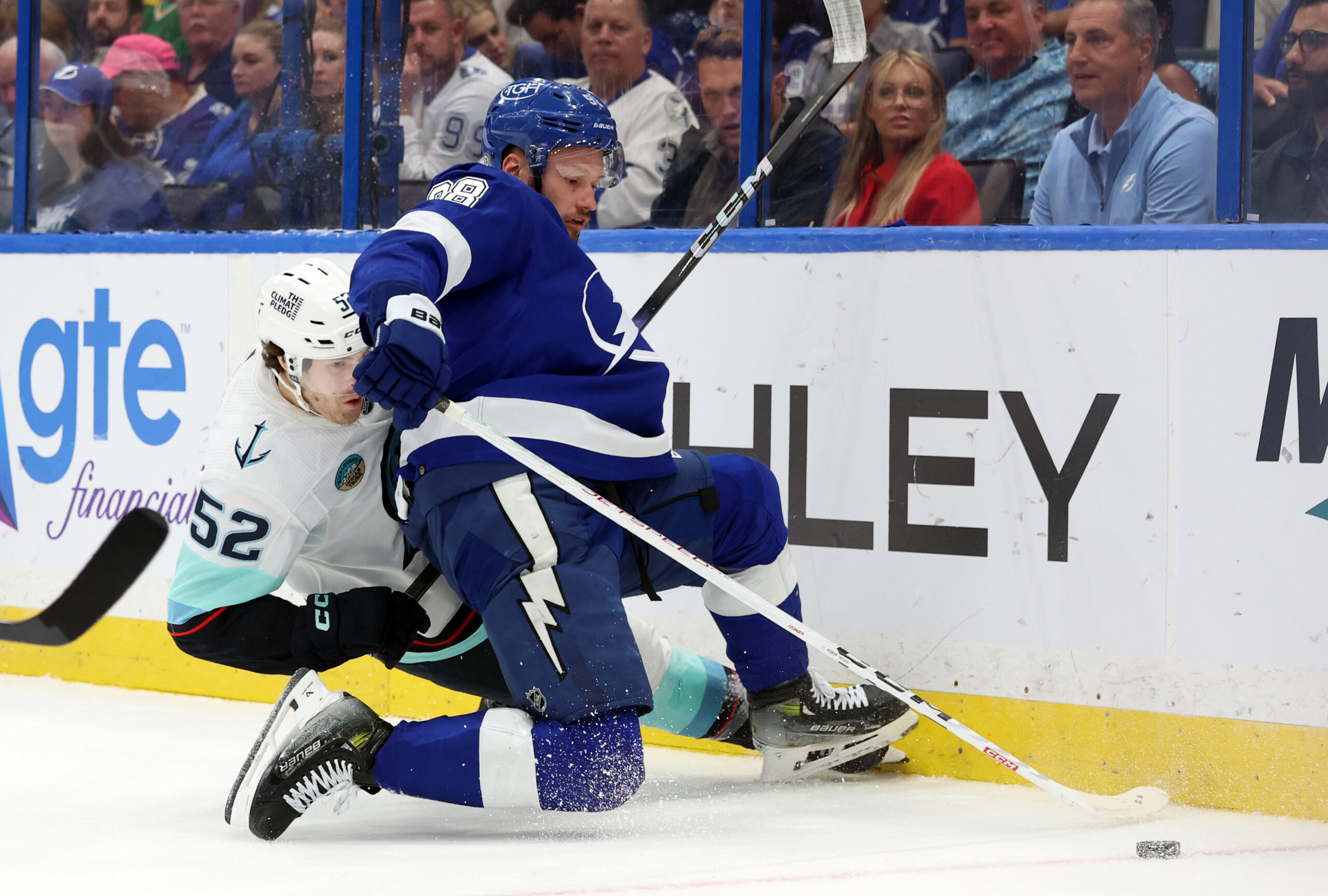Following a 4-2 loss to the Columbus Blue Jackets, the Tampa Bay Lightning sat with a record of 4-3-3 through the first ten games of the 2024 season. A glaring issue of the squad is their inability to play a complete hockey game. There are stretches where Tampa Bay dominates the game and stretches where they don’t deserve to share the ice with the opponent. Let’s dive deep into some numbers by period from recent games to prove this further.
Tampa Bay Lightning: Lifting Their Foot Off the Gas Pedal
A trend that has developed for the Lightning is their ability to dominate a period of 5v5 play. However, the reverse effect occurs for the remaining 40 minutes. Tampa Bay either comes out of the gate flying or has a slow start. The slow starts cause them to play catch-up and scramble. The team is never even keel and consistent. Advanced metrics from Natural Stat Trick enhance this point.
Advanced Metrics Game by Game
Let’s review the following five games, excluding the San Jose Sharks matchup. The entire NHL seems to handle the Sharks with ease. We will use expected goals to measure the Lightning’s performance by period. In particular, a metric called expected goals percentage (xGF%): the ratio of a team’s xGF% in comparison to the opponent. Any percentage above 50% indicates that Tampa Bay controlled the pace of play for the period.
11/2 vs. Columbus
First period: 35.93 xGF%
Second period: 89.4 xGF%
Third period: 22.43 xGF%
10/30 vs. Seattle
First period: 34.37 xGF%
Second period: 24.65 xGF%
Third period: 63.82 xGF%
10/24 vs. Carolina
First period: 30.41 xGF%
Second period: 32.61 xGF%
Third period: 65.98 xGF%
10/21 vs. Toronto
First period: 38.24 xGF%
Second period: 55.39 xGF%
Third period: 43.04 xGF%
10/19 vs. Vancouver
First period: 18.7 xGF%
Second period: 89.01 xGF%
Third period: 33.96 xGF%
The Results
From the results above, the Lightning only managed one period above the 50 xGF% benchmark per game. Tampa Bay can produce quality play for a third of the game. However, the inconsistency won’t be enough for the organization to remain competitive and reach the playoffs. A part of the problem has to do with in-game adjustments and advancements in technology.
Cooper and In-Game Adjustments
Ipads and technological advancement allow players and coaches to analyze games on the bench and between periods. Teams are using film to analyze previous periods and make adjustments mid-game. An article from The Athletic by Michael Russo confirmed this to be true. The Lightning system is easy to identify. The team runs a “2-3” press in the offensive zone with two players in front for screens and deflections. The opposing team’s staff and video review crew are picking up on this.
It may be time for the Lightning to revert to their “run and gun,” high-danger chance generation style of offence. In addition, Jon Cooper believes heavily in his system and combinations. He’s rarely made any adjustments to the lineup on the fly during a game. Teams have become aware of how to defend Cooper. He has offered no response or change in his scheme.
A Tale of Two Teams
The Lightning lacks a positive identity to start the 2024 season. Despite the change in their defensive scheme, they are leaving their goaltenders out to dry. Jonas Johansson has played stellar in his time so far, but fans refuse to acknowledge the downfall of this team not revolving around him. With Andrei Vasilevskiy hurt, blaming Johnasson seems to be the easy way out.
On the other hand, the Lightning have put together a few of the most dominant stretches of hockey in the league. Players such as Brandon Hagel and Nikita Kucherov are producing as individuals. However, the team as a whole isn’t clicking. To get back on track, the Lightning must adjust their offensive scheme to generate more high-danger scoring chances at 5v5.
Main Photo Credit: Kim Klement Neitzel-USA TODAY Sports






